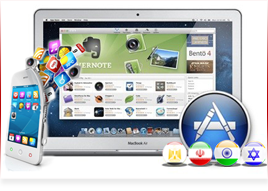Software Localization
 Basically, software localization is a process that translates the user interface elements and related documentations of a software application while keeping its full functionality. Translation is the centerpiece of software localization, and how well the software gets translated determines directly whether the prospective users can well comprehend its functionality and decide to buy it.
Basically, software localization is a process that translates the user interface elements and related documentations of a software application while keeping its full functionality. Translation is the centerpiece of software localization, and how well the software gets translated determines directly whether the prospective users can well comprehend its functionality and decide to buy it.
To perfectly maintain the usability of the software, a glossary listing all terminologies and other technical terms appearing in the software user interface should be provided by the developer in the first place. And only professional translators with technical background or years of experience specializing in software localization should be able to undertake such tasks. Since translation among different languages can bring about unwanted expansion or contraction of the text length, it is of particular significance to adapt the translated content to fit in the often inadequate space on user interface elements.
We help companies adapt their software, websites, and web applications for use in the Middle East.
Localization Process
 Galaxy Lingua has resources to adapt various software packages to the particular end user characteristics and target audiences. Using our localization service, our clients are able to promote their products and services in the Middle East.
Galaxy Lingua has resources to adapt various software packages to the particular end user characteristics and target audiences. Using our localization service, our clients are able to promote their products and services in the Middle East.
Localization is the process of adapting all types of materials for a particular target culture or language. Galaxy Lingua has high experience in software Arabization.
We are able to work with many localization software including: Alchemy Catalyst, SDL Trados Studio 2009, SDL Passolo, Transit XV & NXT, Idiom workbench, Déjà vu, Multilizer. Alchemy Software Development has a range of visual TM solutions that increase translation accuracy and precision while dramatically reducing localization schedules by recycling up to 70% of previous translation work..
Process:
- File Analysis Assess the technical difficulty, workload, lead time and other aspects relating to the software localization project.
- Resource Extraction Localizable resources are to be extracted from the source, including but not limited to texts, user interface, and images.
- Translation Extracted resources are sent to professional translators with pertinent specialties for language translation.
- Review & Editing In-context review and editing are to be conducted by senior linguists to ensure accuracy of the translation.
- TM Updating The translation memory is to be updated using the translated content in the new files.
- Final Delivery The project manager sends the packed files of the localized software to the client for confirmation.
Target Languages for Localization
Galaxy Lingua can localize your software to ME languages (Arabic, Turkish, Hebrew, Farsi, and Urdu).
How Is Localization Different from Translation?
Localization of software is adapting software for use in various languages and locales. Localization involves more than just translation of User Interface (UI) and documentation. Software may need to be adapted for dealing with:
- Local APIs (Application Programming Interfaces), operating systems, search engines, or even currency and accounting standards.
- Right-to-left writing systems of Arabic, Hebrew, Turkish, or Farsi.
- Culture-dependent meanings of icons and underlying connotations of color schemes.
- Sorting algorithms for non-Roman character sets.
- Enabling various input methods.
- Locale-dependent variations, such as date formats (dd-mm-yyyy vs. mm-dd-yyyy), calendar systems
(e.g.Muslim and Hebrew calendars are based on lunar months), currency, address formats, etc.

